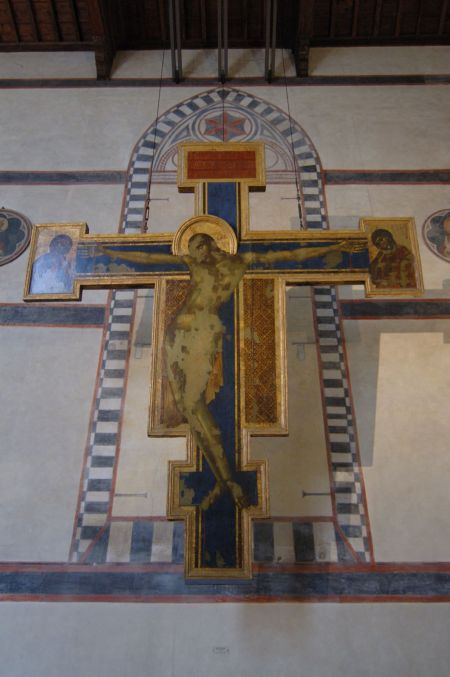Cenni di Peppo, otherwise known as Cimabue, was one of the last prevailing painters and mosaic builders of the Byzantine style. Most of his work was done in Florence, Italy. Art historian Giorgio Vasari (1511-1574) claimed that Cimabue was the teacher of a neophytic Giotto di Bondone. Cimabue died in Pisa ca. 1302, but retains his legacy as one of the most influential and innovative Byzantine artists. He was also mentioned in Dante’s Purgatorio:
O vanity of human powers,
how briefly lasts the crowning green of glory,
unless an age of darkness follows!
In painting Cimabue thought he held the field
but now it’s Giotto has the cry,
so that the other’s fame is dimmed.


Maesta of Santa Trinita, 1283, Tempera on Wood

Madonna and Child in Majesty Surrounded by Angels, c. 1280, Tempera on Wood, Musée du Louvre, Paris



Crucifix, ca. 1280, Tempera on Wood, Basilica de Santa Croce

Flagellation of Christ, 1280, Tempera on wood, Frick Collection, New York


Crucifix, 1268-71, Tempera on wood, San Domenico, Arezzo

Madonna, 1288, Santa Croce, Florence

John the Evangelist, 1288, Santa Croce, Florence
Cimabue also created frescoes for the Church of San Francesco at Assisi between 1280 and 1283

Apocalyptical Christ

Crucifix

The Capture of Christ

St. Matthew

St. Luke

Madonna Enthroned with Angels and St. Francis, 1280


